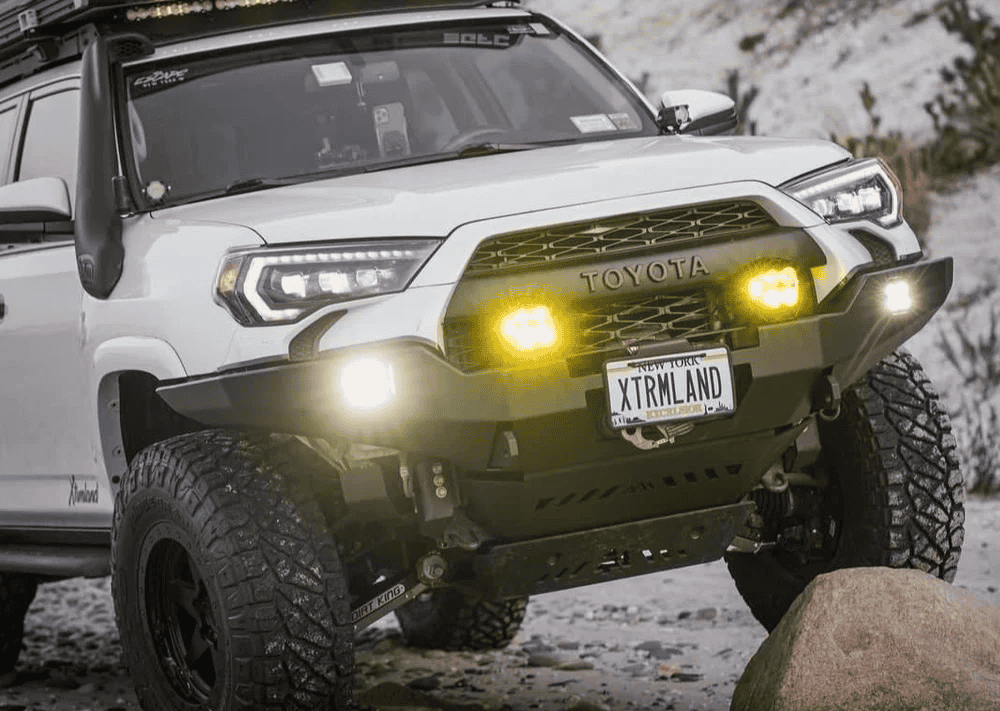Overland Vehicles

An off road upgrade consultation is the roadmap between where your vehicle is today and the terrain you want to reach tomorrow. Instead of chasing trends, you define outcomes like reliable backcountry travel, trail day agility, or long range overland comfort, then match those goals to parts and a logical sequence. Done right, the process prevents mismatched components, poor ride quality, and wasted budget.
Off road upgrade consultation checklist with tires, suspension, armor, recovery gear, and wiring laid out for a complete trail build.
Start with the baseline. Record curb weight, payload, and typical passenger plus cargo. Note current tire size and load rating, axle ratios, brake condition, cooling capacity, steering tightness, and any warning lights. Confirm service history and identify known weak points for your chassis. This snapshot sets guardrails for every decision that follows.
Terrain and trip profile shape the build. Rocky ledges reward clearance, crawl ratio, and underbody armor. Desert whoops prioritize damping, heat management, and bump control. Mud demands aggressive tread, rapid clearing, and recovery readiness. Snow and ice push for predictable tires, traction control strategies, and gentle throttle mapping. Long remote travel adds power management, communications, and spares planning.
Budget and phasing matter. A good plan sequences upgrades so each step stands alone while still feeding the final build. For example, choose tire size first, then match gearing and brakes to that diameter. Add suspension tuned for the vehicle’s steady state weight, not an empty hull. Wire the vehicle with an expansion bus and labeled circuits so future accessories connect cleanly without rewiring.
A thorough consultation focuses on systems that must work together. Tires define real world ground clearance, gearing needs, and brake load. Suspension must control that unsprung mass while keeping alignment in spec through travel. Armor should protect the parts most likely to make contact without overloading the front end or pushing weight too far aft. Recovery gear and mounting points must be strong and accessible, with electrical and lighting routed so it remains serviceable in the field.
Clarify use cases like weekend trails, multi week routes, towing a small trailer, or daily driving with occasional dirt. Translate that into target tire diameter, target payload, and expected cruising speeds. List must haves such as onboard air, lockers, or additional fuel, and nice to haves like cabin comfort upgrades. With targets in place, you can avoid scope creep and choose components that support the mission.
Map typical routes, max water crossings, expected temperatures, and altitude. High heat pushes cooling upgrades and shock tuning with better fluid and reservoirs. High altitude changes fueling and transmission shift behavior. Deep water and silt call for sealed connectors, elevated intakes, and frequent service intervals. If night driving is common, plan lighting for spread and distance while respecting glare control and switching logic.
Prioritize tires, brakes, and steering first because they influence every mile. Next, select gearing so the engine’s useful torque band matches the new tire diameter. Then dial suspension spring rates and damping for constant load, not just curb weight. Add armor and recovery points. Only after dynamics are correct should you layer in power systems, radios, and comfort features. At each step, verify alignment, brake bias, and proper torque on fasteners.
Weight math rules everything. Know gross vehicle weight rating, axle ratings, and how added equipment shifts center of gravity. Keep heavy items low and between the axles. Overloading the tail makes the rear wallow and unloads the front tires. Excess nose weight slows steering and increases dive under braking. Aim to maintain approach, breakover, and departure geometry by pairing tire size with measured lift, bump stop placement, and skid design.
Drivetrain matching avoids sluggish performance and overheating. Larger tires raise effective gearing, which can force constant downshifts and higher transmission temps. Correct with axle ratios that return the engine to its efficient band at highway speed. If traction is the limiter, consider selectable lockers or advanced traction control strategies before stacking power mods. Verify speedometer correction and recalibrate transmission shift points where possible.
Electrical planning prevents headaches later. Audit expected loads for lights, compressor, fridge, comms, and inverters. Choose proper gauge wiring, fusing, and a power distribution module with room for growth. Isolate the start battery and use a DC to DC charger for an auxiliary battery. Protect wiring with abrasion resistant loom, service loops, and drip loops. Label everything so trailside fixes are faster.
Finally, validate with test and tune. After the initial phase, run a shakedown on varied surfaces, document behavior, and adjust tire pressure, shock settings, and sway control. Listen for clunks, check fasteners, re torque wheels, and watch temps. A good consultation includes this feedback loop and a plan for periodic inspection.
If you prefer a professional partner to translate this plan into a cohesive vehicle, work with a shop that designs, fabricates, and tests under one roof. OZK Customs builds purpose driven overland and trail ready vehicles with attention to ride quality, quiet interiors, and field serviceability. Explore the range of capabilities on our overland rigs page, and see how a custom overland upfit becomes a reliable system rather than a parts list. Curious about process and standards? Read more at why choose OZK.
OZK is based in Fayetteville, Arkansas, centrally located for straightforward travel and vehicle pickup. Bring your goals. We will help sequence tires, gearing, suspension, armor, recovery, and power so the entire package works the way it should when the pavement ends.
Ready to turn a solid plan into a dialed rig? Book an OZK consult to translate goals into parts, timelines, and pro installation. Our team builds quiet, rattle free vehicles that track straight, ride comfortably, and perform off pavement. Tell us your routes and payload. We will spec it, build it, and hand you the keys.
ADDRESS:
6159 E Huntsville Rd, Fayetteville, AR 72701
PHONE:
(479) 326-9200
EMAIL:
info@ozkvans.com